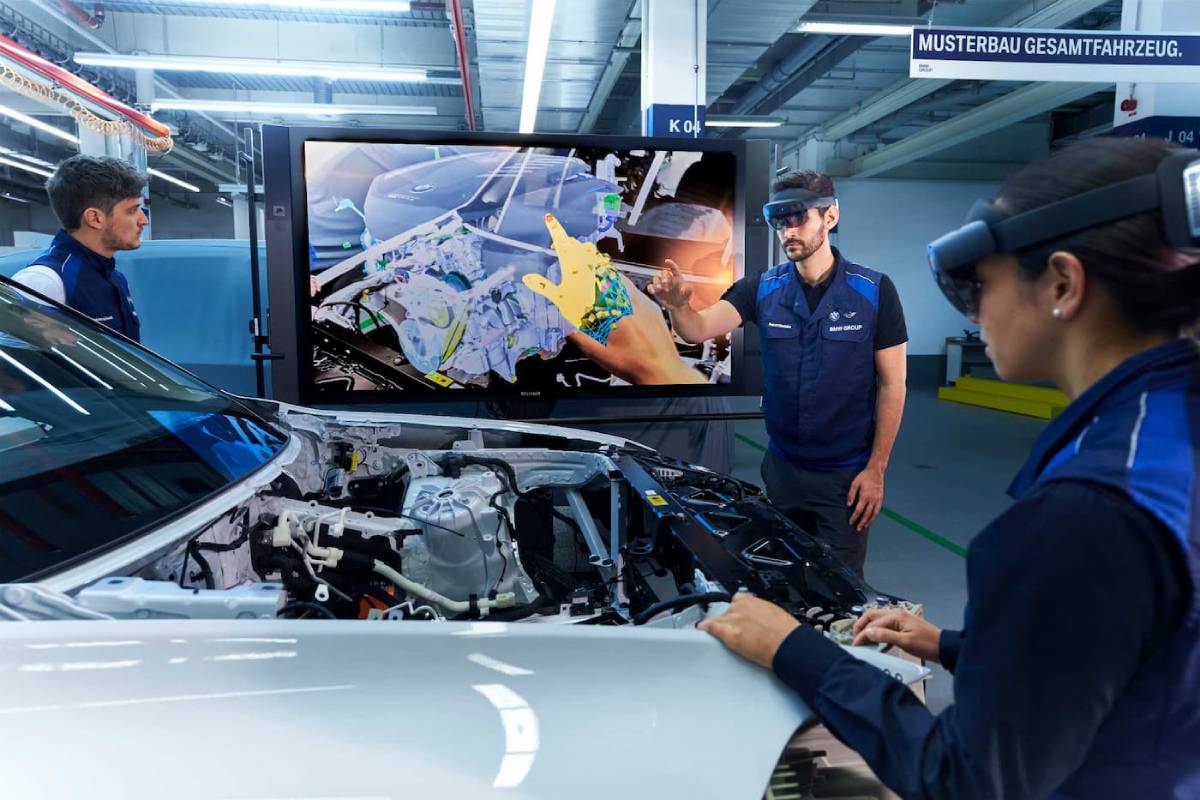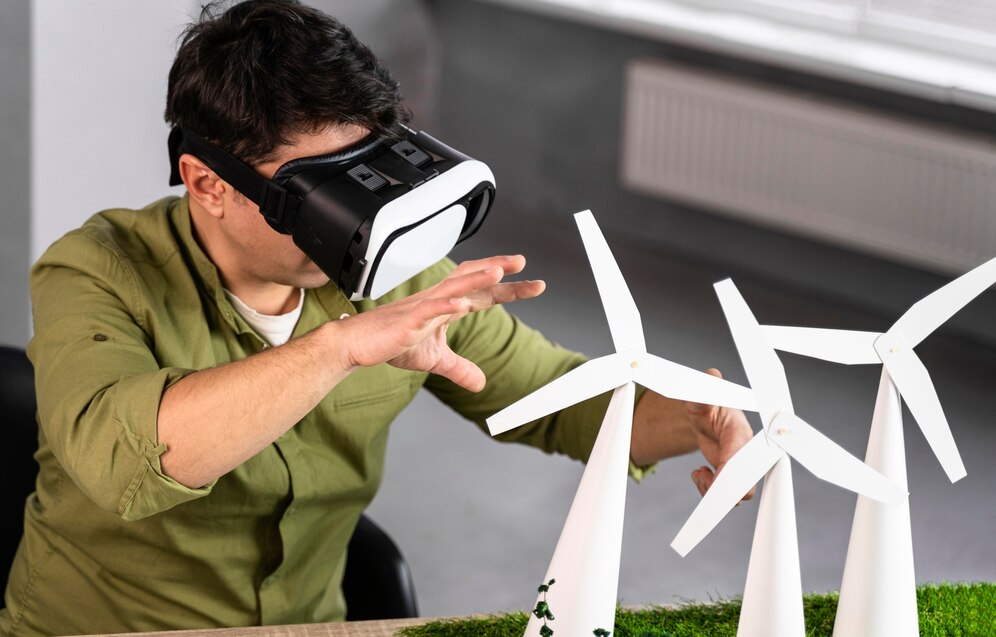
Augmented Reality in Vehicle Maintenance and Repairs
Recently, the automotive industry has seen a big change. Augmented reality (AR) is now a key tool for vehicle maintenance and repairs. Cars are getting more complex. So, old ways of diagnosing and fixing problems are changing. Augmented reality provides a modern way to improve precision, efficiency, and safety in car maintenance. This blog looks at how AR changes car repairs. It covers benefits, common issues, expert tips, and what to expect in automotive technology.
Key Benefits of Augmented Reality in Automotive Maintenance
Augmented reality is not just a buzzword in the tech industry. It holds significant promise for transforming automotive maintenance. AR lets technicians mix virtual elements with the real world. This helps them better understand complex vehicle systems. Here’s why AR in vehicle repairs matters:
Enhanced Diagnostics with AR
A major benefit of augmented reality in car maintenance is its accurate and efficient diagnostics. AR helps technicians see digital information on the physical world. This lets them visualize complex systems and spot issues that are hard to see. When a car’s engine has a problem, AR shows real-time data. It also points out the trouble spots, making diagnosis easier.
This capability reduces the need for exploratory disassembly, saving time and labour costs. It also helps find the real cause of the issue. This reduces the chance of misdiagnosis and cuts down on repeated customer visits. An AR headset can find a faulty sensor’s location. It does this by comparing real-time data to baseline performance data.
Improved Training and Skill Development
The automotive industry is always changing. So, it’s important to keep technicians updated on the latest technologies. AR provides a unique training solution. It simulates real-world scenarios, so there’s no need for physical components. Trainees can work with virtual car parts. This gives them hands-on experience and boosts their confidence before they handle real vehicles. This approach not only enhances skill development but also reduces the risk of errors during repairs.
AR training modules can be tailored for different technicians. They can fit various experience and skill levels. This adaptive learning model helps people remember information better. It also makes learning about new tech, like electric vehicles (EVs) and hybrid systems, quicker and easier.
Increased Efficiency and Reduced Downtime
Time matters in vehicle repairs. AR boosts efficiency by giving technicians step-by-step guidance. AR projects instructions right onto the car’s parts. This means you don’t need to check manuals or screens. It makes the workflow smoother. This speeds up repairs and cuts vehicle downtime. That matters for customers and service providers.
Some AR systems let users operate hands-free. They can use voice commands or gesture controls. This helps technicians stay focused on their tasks. This hands-free interface boosts productivity. It also ensures maintenance runs smoothly without breaks.
Enhanced Safety Measures
Safety is paramount in automotive maintenance, and AR contributes to a safer working environment. AR gives technicians real-time feedback and alerts. This helps them avoid hazards and follow safety rules. For example, if a technician works on an electrical system, AR can alert them to high-voltage areas. This helps avoid accidents and injuries.
AR can also remind workers to use safety gear, like gloves and eye protection. It can simulate failure scenarios, helping workers build situational awareness. These features matter a lot in places that handle EV batteries or automated systems. In these settings, regular risks are even higher.
Additional Expert Tips & Common Mistakes to Avoid
The benefits of AR in automotive maintenance are undeniable. It’s essential to approach this technology with a strategic mindset. Integrating AR requires more than just new tools. It demands a cultural shift, ongoing investment, and mindful implementation. Here are some expert tips and common mistakes to avoid:
Best Practices for Implementing AR in Car Repairs

- Invest in Quality AR Tools: The effectiveness of AR in vehicle maintenance largely depends on the quality of the tools used. Investing in reliable AR software and hardware ensures accurate diagnostics and seamless integration with existing systems. This includes headsets, smart glasses, and AR-compatible diagnostic scanners.
- Continuous Training and Development: As AR technology evolves, continuous training is crucial for technicians to stay updated with the latest features and applications. Regular workshops and training sessions can enhance their proficiency in using AR tools effectively. Training should also address cybersecurity and data privacy awareness.
- Integration with Existing Systems: For AR to be truly effective, it should seamlessly integrate with existing diagnostic and repair systems. Ensuring compatibility with current tools and software is vital for maximising the benefits of AR. Automotive service centres should also consider cloud-based systems for remote updates and data sharing.
- Adopt a Phased Implementation Strategy: Introducing AR across an entire workshop all at once can be overwhelming. A phased approach allows technicians to gradually adapt, troubleshoot integration issues, and build confidence before full-scale implementation.
Common Mistakes to Avoid
- Overreliance on AR: While AR is a powerful tool, relying solely on it can lead to complacency. Technicians should still rely on their expertise and judgment, using AR as a supplement rather than a replacement. Experienced technicians can often spot problems that digital systems may overlook.
- Neglecting Data Privacy: With AR collecting and processing vast amounts of data, ensuring data privacy and security is paramount. Implementing robust data protection measures is essential to safeguard sensitive information. This includes encrypting customer records, maintenance logs, and component performance metrics.
- Ignoring User Feedback: User feedback is invaluable in refining AR applications. Ignoring feedback from technicians and customers can hinder the development of effective AR solutions tailored to specific needs. Workshops should create feedback channels to allow technicians to report usability issues and suggest improvements.
- Underestimating Costs: Although AR can yield long-term savings, the initial investment in hardware, software, and training can be significant. Automotive businesses should carefully budget for AR implementation, accounting for updates, maintenance, and personnel development.
Advanced Insights and Expert Recommendations
AR technology is changing fast. Its uses in automotive maintenance are growing. Experts think AR will change how vehicles are serviced, maintained, and designed. It will support current practices and create new ones.
The Future of AR in Automotive Maintenance
AR applications in automotive maintenance are getting smarter. This is thanks to advancements in machine learning and artificial intelligence. Predictive maintenance, enhanced by AR, will change the industry. It spots potential problems before they happen. This helps lower the chances of breakdowns and expensive repairs.
AR systems will increasingly access real-time sensor data from vehicles. They will analyse performance issues and provide predictive alerts for technicians. This proactive approach boosts vehicle reliability. It also lengthens the life of key parts.
Moreover, manufacturers are beginning to design vehicles with AR diagnostics in mind. Smart components can have AR markers built in. They may also be designed for digital visualisation, which makes service and maintenance easier.
Collaborative AR Solutions
Collaboration is crucial in the automotive industry. AR helps technicians, engineers, and manufacturers communicate easily. Collaborative AR platforms let users share information and insights in real time. This makes vehicle maintenance more efficient and cohesive.
If a technician faces an unusual problem, they can use AR. This lets them start a live session with a manufacturer’s expert. The expert can see the same visual feed and offer help. This reduces the need for part returns or lengthy troubleshooting, saving time and resources.
These collaborative environments improve remote diagnostics. This helps manufacturers support dealerships and service centres in remote areas. As a result, service reach and customer satisfaction go up.
Customised AR Solutions
Every vehicle is unique, and so are its maintenance needs. Custom AR solutions fit specific makes and models. They provide accurate diagnostics and repairs. This boosts the efficiency and effectiveness of maintenance.
Some OEMs offer branded AR platforms. These platforms sync with vehicle data and service manuals. These custom solutions give focused guidance. They adapt to regional setups and support hybrid and electric drivetrains.
Customised AR apps can change based on the workshop. They recognise tools, technician preferences, and local service procedures.

AR and Sustainability
Sustainability is an increasingly important factor in automotive operations.
AR helps the environment by:
- Reducing paper use with digital manuals.
- Minimising part wastage through accurate diagnostics.
- Lowering emissions by enhancing vehicle performance with preventative maintenance.
AR also supports green training initiatives by reducing the need for physical training parts and demo vehicles. This makes technician education more sustainable and scalable across training centres.
Conclusion: Embracing the Future of Automotive Maintenance with AR
The automotive industry is changing with digital tools. Augmented reality will be key for vehicle maintenance and repairs. AR improves diagnostics, boosts training, increases efficiency, and ensures safety. This gives automotive technicians a complete solution to their challenges.
To make the most of AR, invest in good tools, offer ongoing training, and blend AR smoothly with current systems. Automotive businesses that focus on user feedback, data privacy, and careful rollout plans will likely enjoy the full benefits of this technology.
In conclusion, augmented reality is more than just a technological trend. It’s a transformative force that is reshaping the way we approach automotive maintenance. As we look to the future, embracing AR in vehicle repairs is not just an option; it’s a necessity for staying competitive in an ever-evolving industry.
Are you ready to embrace the future of automotive maintenance with augmented reality? The road ahead is bright—and increasingly augmented.